|
10 Vanished Balboa Park Landmarks
They are gone now - Can you figure out where they once stood?
By David Marshall, AIA
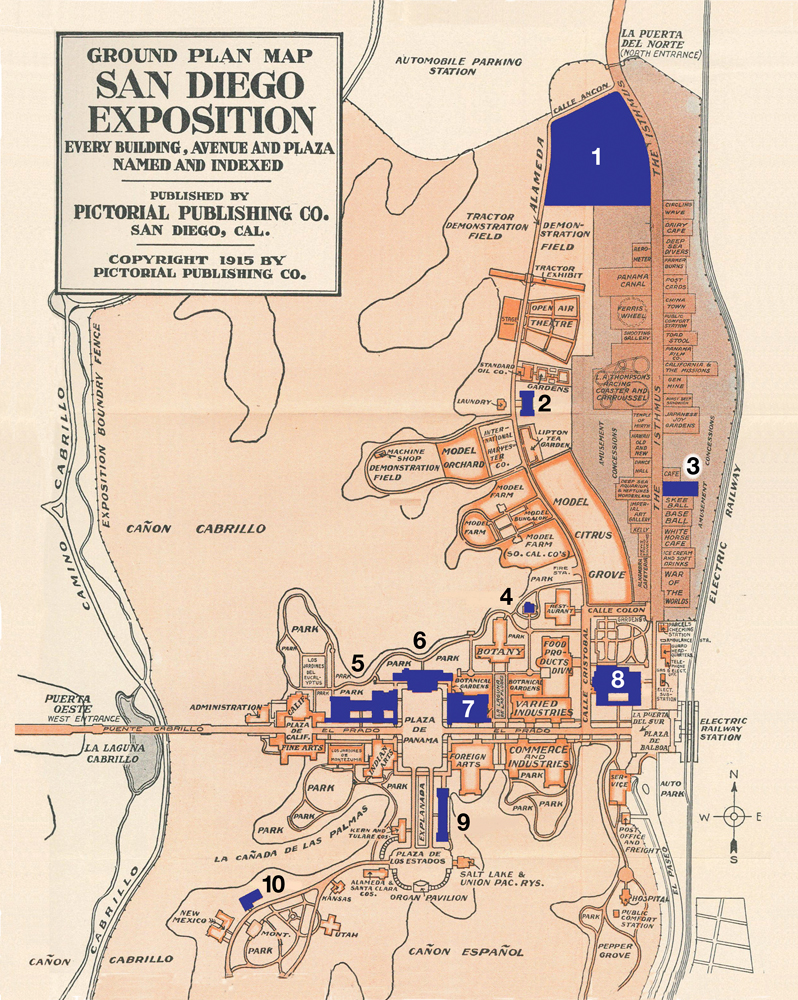
I remember my first reaction when I saw a historic photograph of the Sacramento Valley Building, "That was in Balboa Park?" Indeed it was. It was in our famed park for nine years in a very prominent location. Even those very familiar with Balboa Park may not be aware of how much the architecture in the park has changed since the first buildings were constructed. Most of the 1915-16 Panama-California Exposition buildings were intended to be temporary and many succumbed to deterioration. Other buildings were lost to tragic fires and thoughtless demolition.
This article features historic postcard images of ten vanished buildings from the 1915-16 exposition and the map above showing the numbered sites in blue where they were once located. Test your knowledge of the park and see if you can figure out where they once stood. (Answers are listed at the end of this article.)
Japanese Tea House
This temple-like pavilion was surrounded by gardens and a flowing stream to create a traditional Japanese setting. All the parts were made in Japan and shipped to San Diego where Japanese carpenters assembled them using traditional building techniques. In 1955, at the urging of the Zoological Society, the Tea House and Garden were demolished to make way for the growing zoo. |
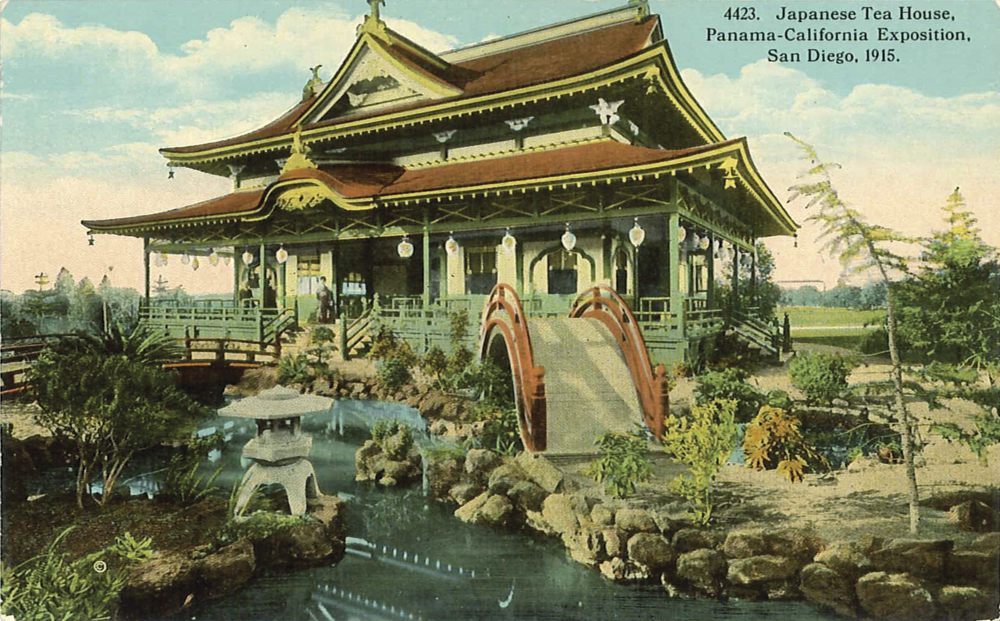 |
Sacramento Valley Building
This classically proportioned building, like most of the 1915 exposition structures, was never intended to last. And it didn't. The building, renamed the United States Building in 1916, was demolished in 1924 and replaced two years later by another structure. |
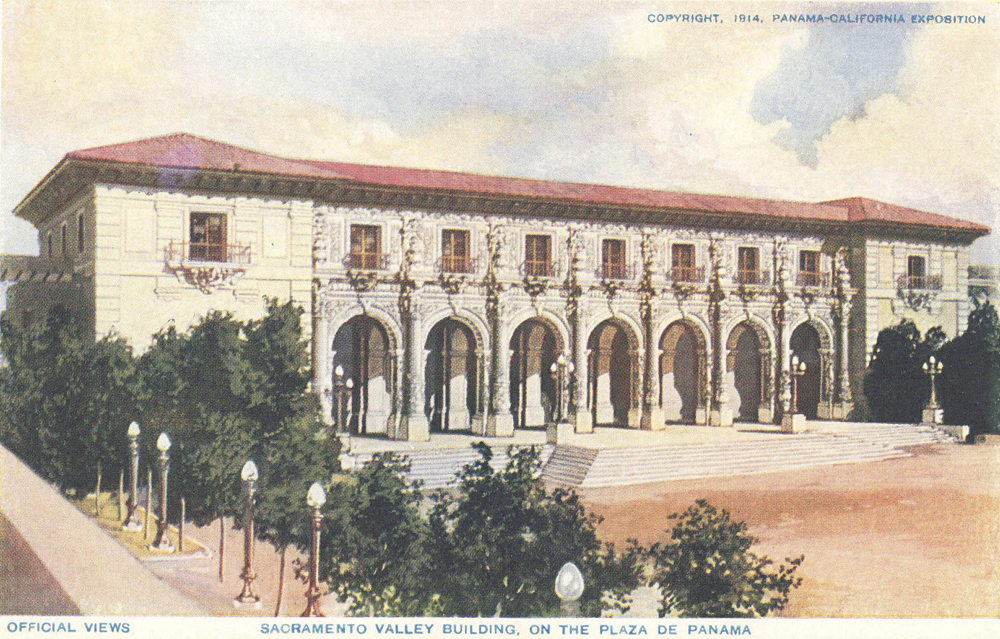 |
Science and Education Building
This building was renamed the Palace of Science and Photography for the 1935 exposition. The building was demolished in 1964. The original 1913 architectural plans are on file in the central library, so there are hopes that it can one day be reconstructed. |
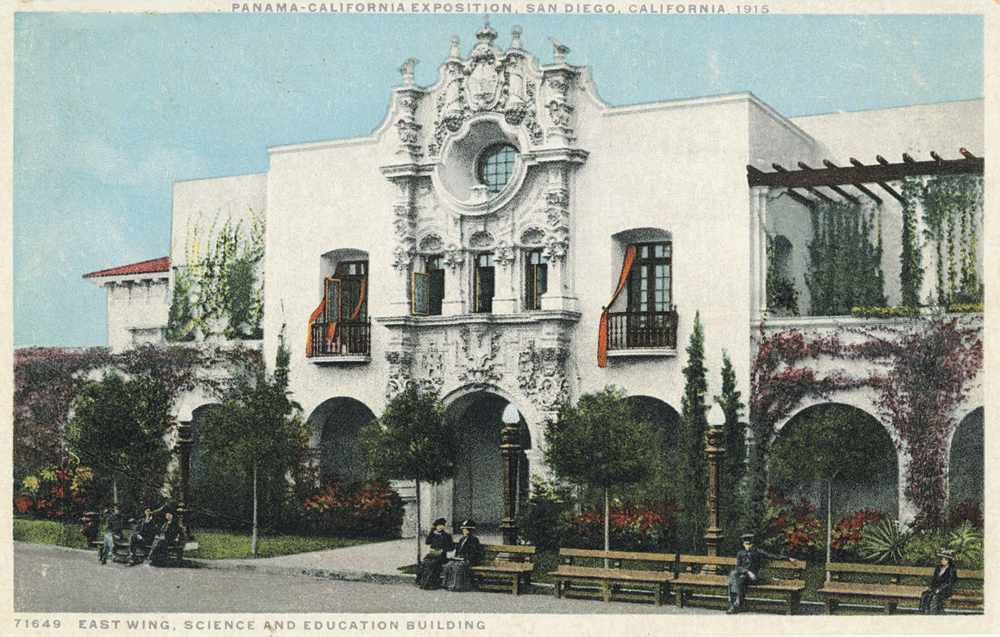 |
Cawston Ostrich Farm
One of the places that 1915 exposition visitors could see exotic animals was at the Cawston Ostrich Farm. The building was modeled after an Egyptian pyramid, probably because ostrich feathers were a prominent symbol in ancient Egyptian artwork. |
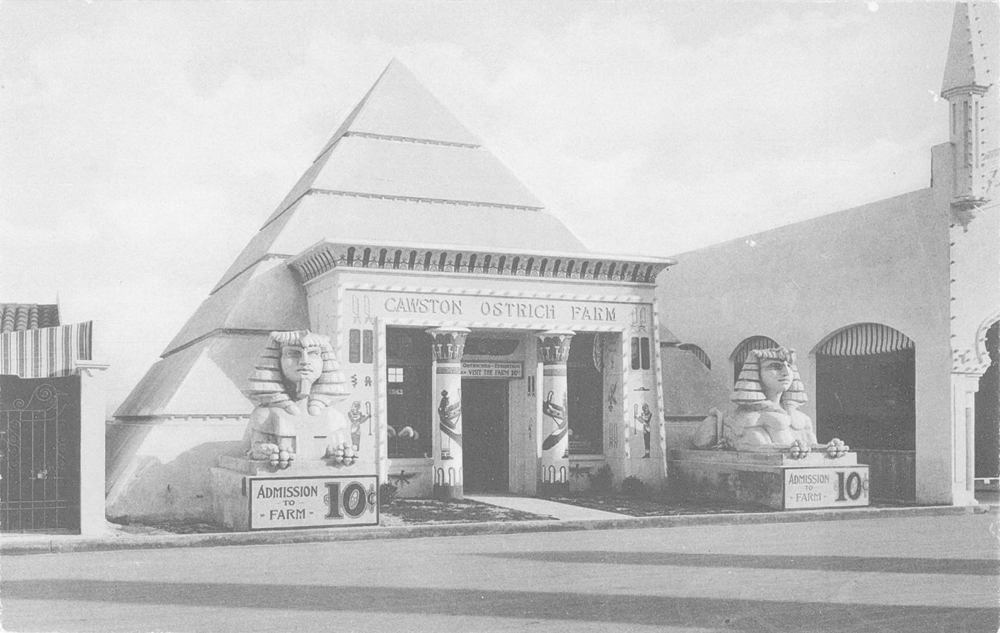 |
San Joaquin Valley Building
The design of this building was unique for the exposition because it had no exterior arcade. The beautiful interior featured unique decorations in fine grains and grasses, which covered panels on the walls and ceilings. The building fell into disrepair and was demolished in 1933. |
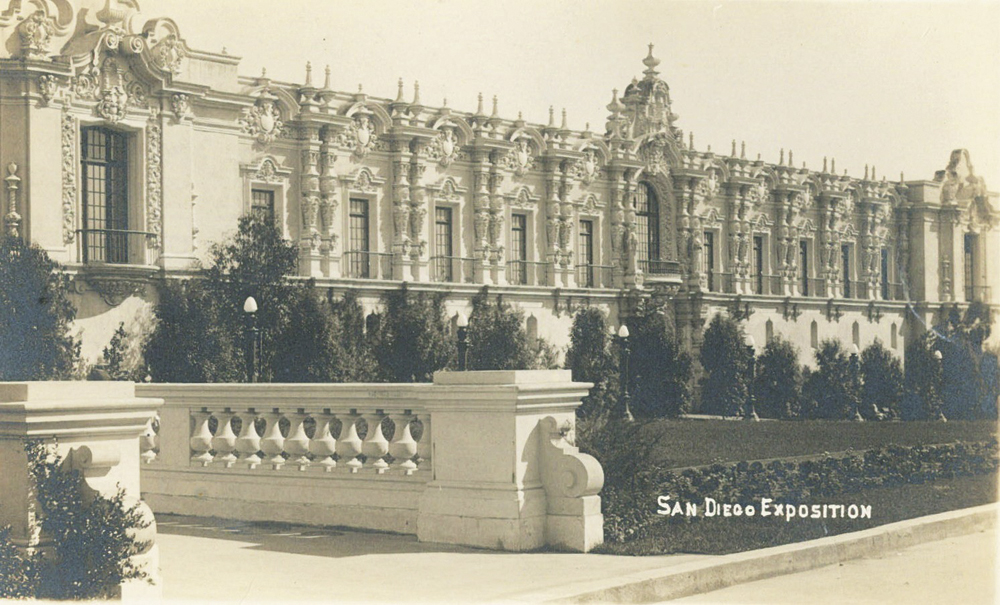 |
Home Economy Building
This building was renamed the Pan-Pacific Building in 1916 and was later renamed the Cafe of the World in 1935. The design of the corner tower was closely modeled after the Palace of Monterey in Salamanca, Spain. The Home Economy Building was demolished in 1963 to make way for a new, permanent building. |
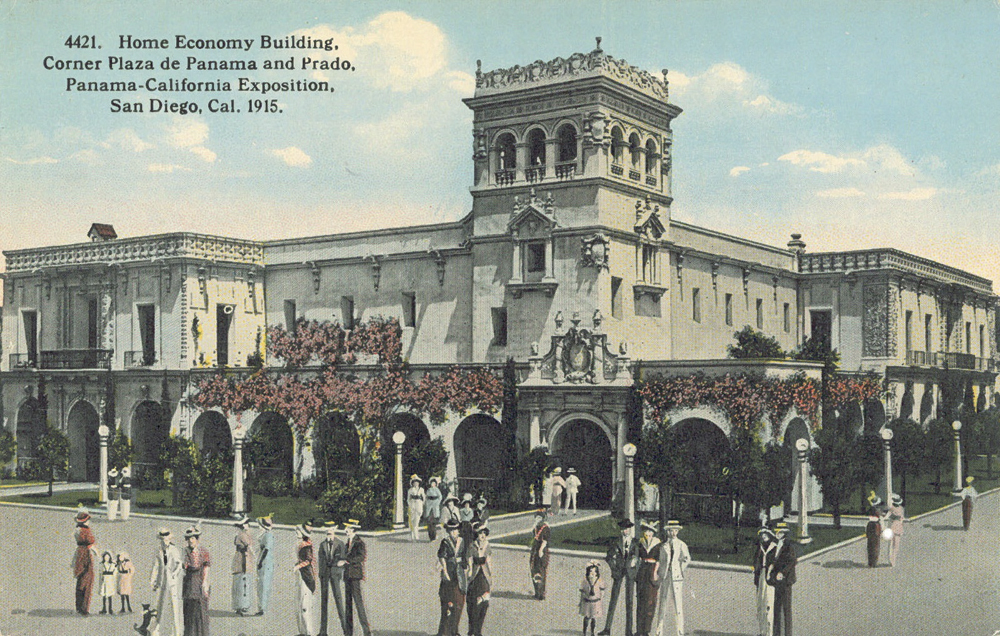 |
Nevada State Building
When this building was threatened with demolition in 1923, it was moved by the San Diego Zoological Society and turned into the zoo's Children's Center. The date of its eventual demise is unknown. |
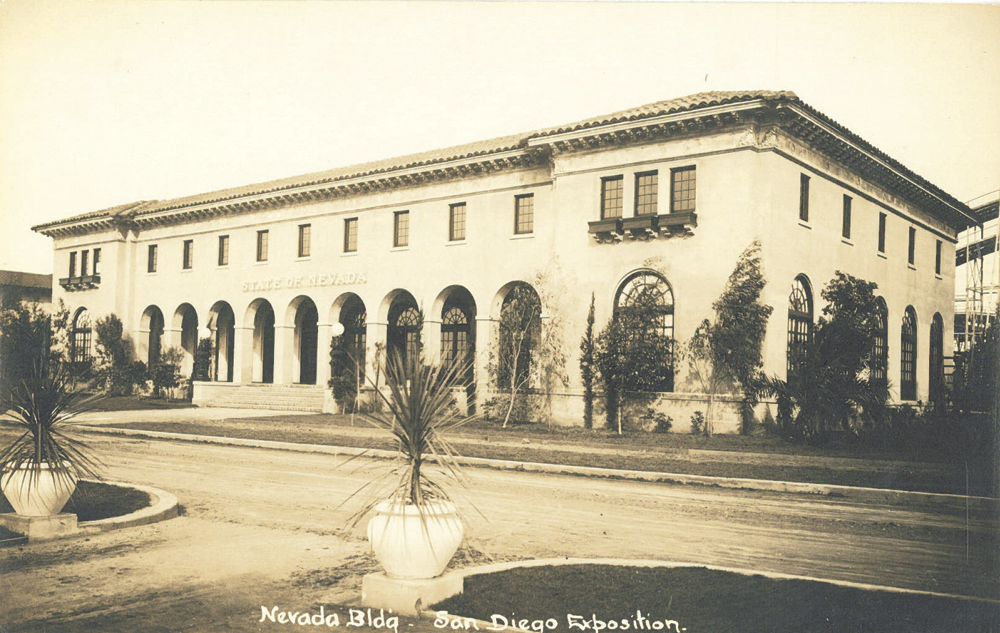 |
Southern California Counties Building
This imposing structure was marked by two towers that framed a large forecourt. The two-level arcade was inspired by the Convent of San Augustin in Querétaro, Mexico. On November 25, 1925 the building, then a civic auditorium, was destroyed by a spectacular fire only hours before it was to host the annual Firemen's Ball. |
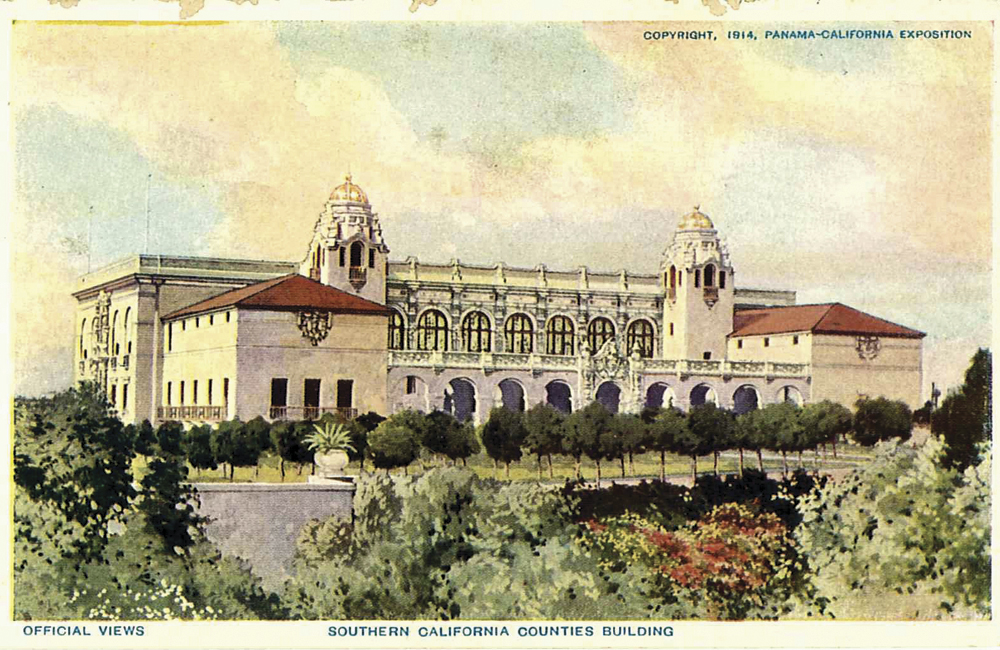 |
Washington State Building
This building had a rear balcony that overlooked a steep canyon. The series of slender vertical arches below the curved parapets created oddly interesting facades. The building was demolished prior to the 1935-1936 California Pacific International Exposition. |
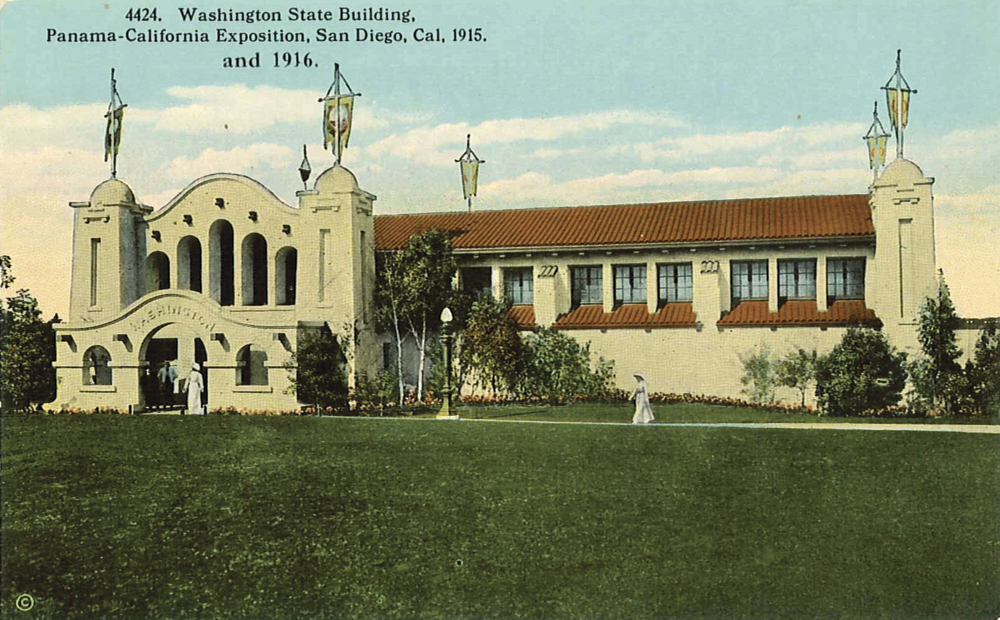 |
Painted Desert
One of the most unconventional exhibits of the 1915 exposition was the Painted Desert. It was promoted as "the most extraordinary exhibit of Indian life ever attempted." Visitors could see "Pueblo Indians working and playing as they do in their real homes in Arizona and New Mexico." The attraction was revived for the 1935 exposition and renamed the Indian Village. Later the village was used as a Boy Scout camp before the fire marshal declared it a fire hazard and ordered it to be destroyed. |
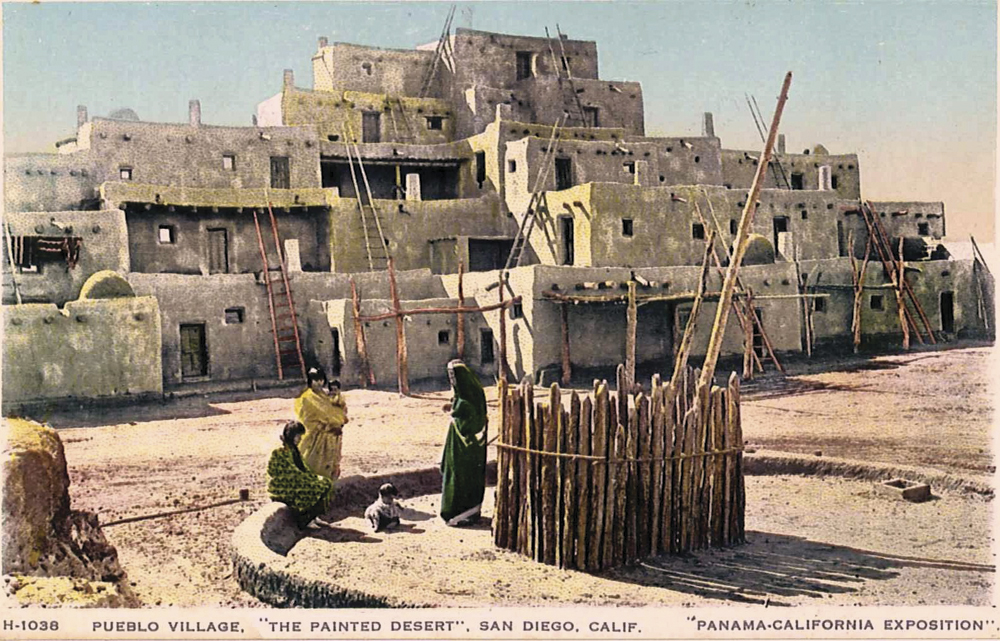 |
Author David Marshall is a San Diego architect whose firm specializes in historic preservation and adaptive reuse. His new book, San Diego's Balboa Park (Arcadia Publishing), features many of the historic postcards pictured above. David is a member of the Historical Resources Board and a former president of SOHO. All images were provided by the author.
Answers Japanese Tea House - 4; Sacramento Valley Building - 6; Science and Education Building - 5; Cawston Ostrich Farm - 3; San Joaquin Valley Building - 9; Home Economy Building - 7; Nevada State Building - 2; Southern California Counties Building - 8; Washington State Building - 10; Painted Desert - 1
|
MORE FROM THIS ISSUE
From the Editor
Reconstructing Balboa Park's "Dream City"
Names & Milestones in the History of Prado Buildings
10 Vanished Balboa Park Landmarks
Historic Losses: Fires Devastate San Diego San Diego County's Historic Sites
California Tile: Our Claim to Tile Fame
The Use of Tile in the Home
Tile Resources
President's Message
Reflections
In Memoriam - Beth Montes
The Beth Montes Memorial Internship & Outreach Fund
Book Reviews
Letters to the Editor
Lost San Diego
Strength in Numbers
Advertisements
DOWNLOAD full magazine as pdf (21mb)
|














